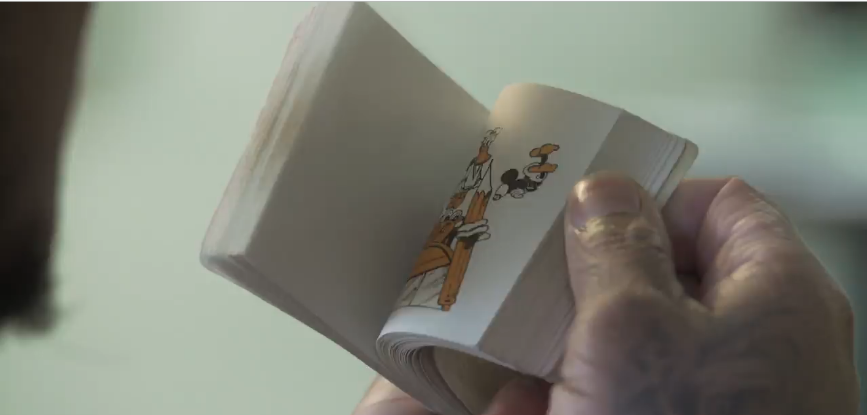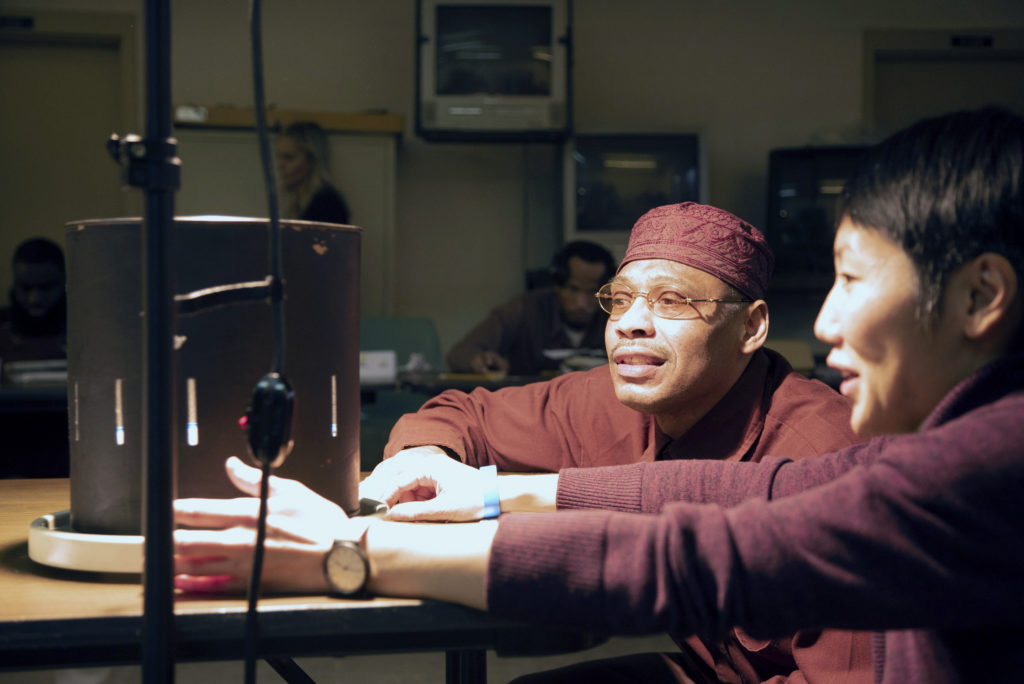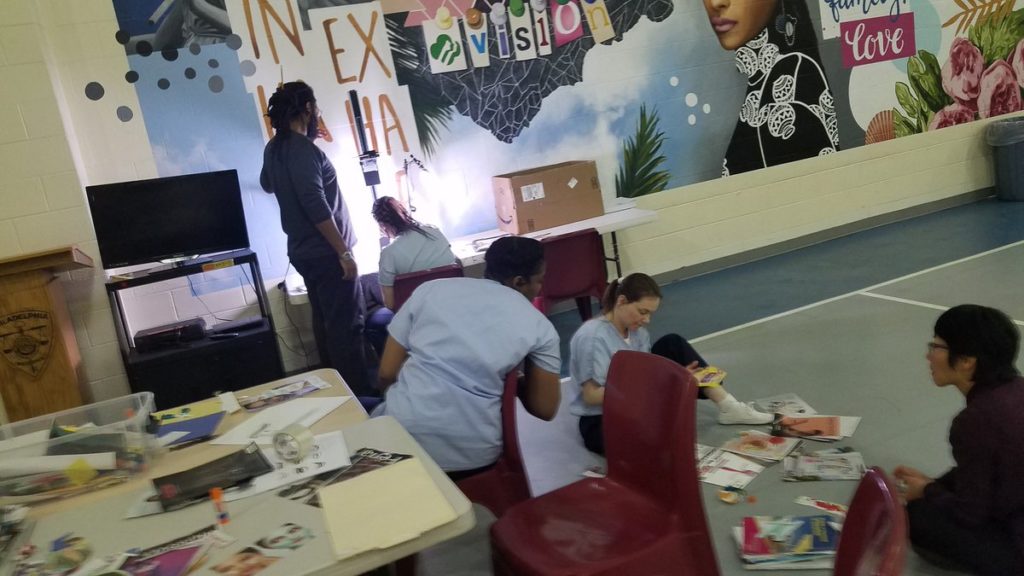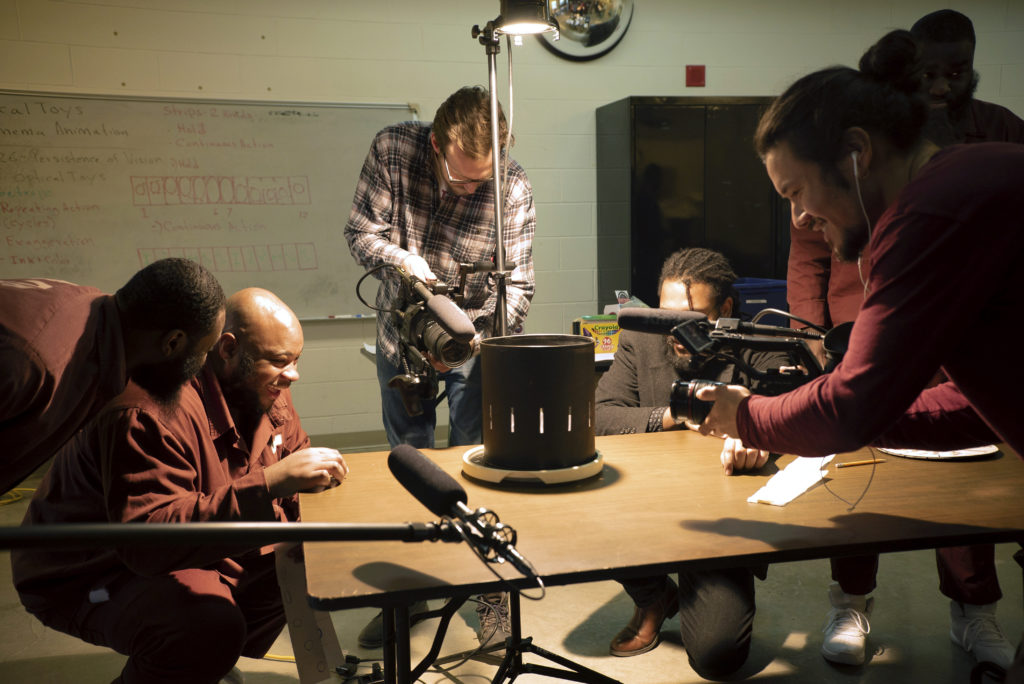After three years of planning, Hidden Lives Illuminated is ready to premiere
 August 1, 2019
Category: Featured, Media, Medium, Purpose
August 1, 2019
Category: Featured, Media, Medium, Purpose
“Anything public is me.”
Sean Kelley is the senior vice president of Eastern State Penitentiary, director of interpretation, and, until very recently Hidden Lives Illuminated‘s project lead, is not afraid to joke about just how much time and effort he’s devoted to “bringing invisible stories of people living in prison to light” for ESP’s upcoming month-long film series.
Using a concert-grade digital projector, 20 short animated films — conceived, narrated, and animated by people incarcerated in PA correctional institutions — will be screened onto a 20-by-30-foot area of ESP’s outer walls three times each night from August 15 through September 12.

A screen-capture from the documentary about the participants in Hidden Light Illuminated show one of the filmmakers’ flip-books.
Twenty films will be screened over the four-week period, and presentations and hands-on activities taking place between the show times will give viewers multiple chances to reflect on the the films and the stories they present.
As a grand finale, a documentary about the incarcerated filmmakers of Hidden Lives Illuminated will be shown the last day of the project.
Inspiration for Hidden Lives Illuminated came from a 96 Acres project called Freedom/Time — in which short animations created by inmates were projected on the exterior of a Chicago prison. Kelley was so moved by the project, he spoke with the 96 Acres team about bringing it to the Philadelphia area.
Hidden Lives Illuminated is the Philadelphia-area product of that dialogue. It has been in development for three years.

Justino and lead teaching artist Erika Tsuchiya-Bergere play his animation sequence in a zoetrope cylinder during classes at the Pennsylvania State Correctional Institution at Chester. (Photo by Richard Patterson, courtesy of Eastern State Penitentiary Historic Site, Philadelphia)
In the summer of 2018, teaching artists Erika Tsuchiya-Bergee and William Wallace III worked with the inmates at the PA Correctional Institute at Chester and Philadelphia’s Riverside Correctional Facility for Women. Lessons in scriptwriting took place in the fall, and the animation course in the spring. Throughout, Tsuchiya-Bergee and Wallace guided the filmmakers in opening up to art as a way to express their truths.

Students at the Riverside Correctional Facility for Women create stop motion animation. (Photo by Shawn Hawes, Philadelphia Prison System)
Discussion around weekly themes — The View from Inside; Criminal Justice Today; Family and Community Impact, and Restorative Justice — regularly took place between the filmmakers and the ESP project team. Kelley said that, at first, the ESP team had some difficulty knowing how to talk about the contemporary justice system.
“We are not a reentry [program], we were doing this for our visitors,” he said, adding that those are mostly middle class, 80% white, and 80% tourist.

Student filmmakers respond to seeing their drawings animated in a zoetrope cylinder during classes at the Pennsylvania State Correctional Institution at Chester. (Photo by Richard Patterson, courtesy of Eastern State Penitentiary Historic Site, Philadelphia)
But as the project progressed, the goal transformed. The team wanted to have a “broad dialogue” — meaning, having the films reach and build awareness in a truly wide range of people — and to have it include the communities, families, and individuals impacted by incarceration.
During the creation process, the project team had candid discussions with the filmmakers about producing content appropriate for all ages — an especially important consideration so that the inmates’ children were able to watch and experience their parents’ emotions and revelations.
Speaking directly to people who are living (or who have previously experienced living) in incarceration was an extremely valuable part of the project. “Proximity is important,” he said, quoting Bryan Stevenson‘s “Just Mercy.”
He added that employing formerly incarcerated people has changed the values of ESP for the better.
Many of the inmates involved in the project made mistakes, Kelley said, but “they are still human.” And at the core of Hidden Lives Illuminated is a push to translate the misunderstood experiences of those living in prison. He said that the films the incarcerated filmmakers have produced are “beautiful and really moving.”
They hold the “unusual charm of simple but sincere art,” he said. But he was adamant in respectfully declining to talk on behalf of the incarcerated filmmakers. He invited Generocity to join in on a conversation with the filmmakers, instead.
That conversation will be part of an upcoming article.
Trending News









